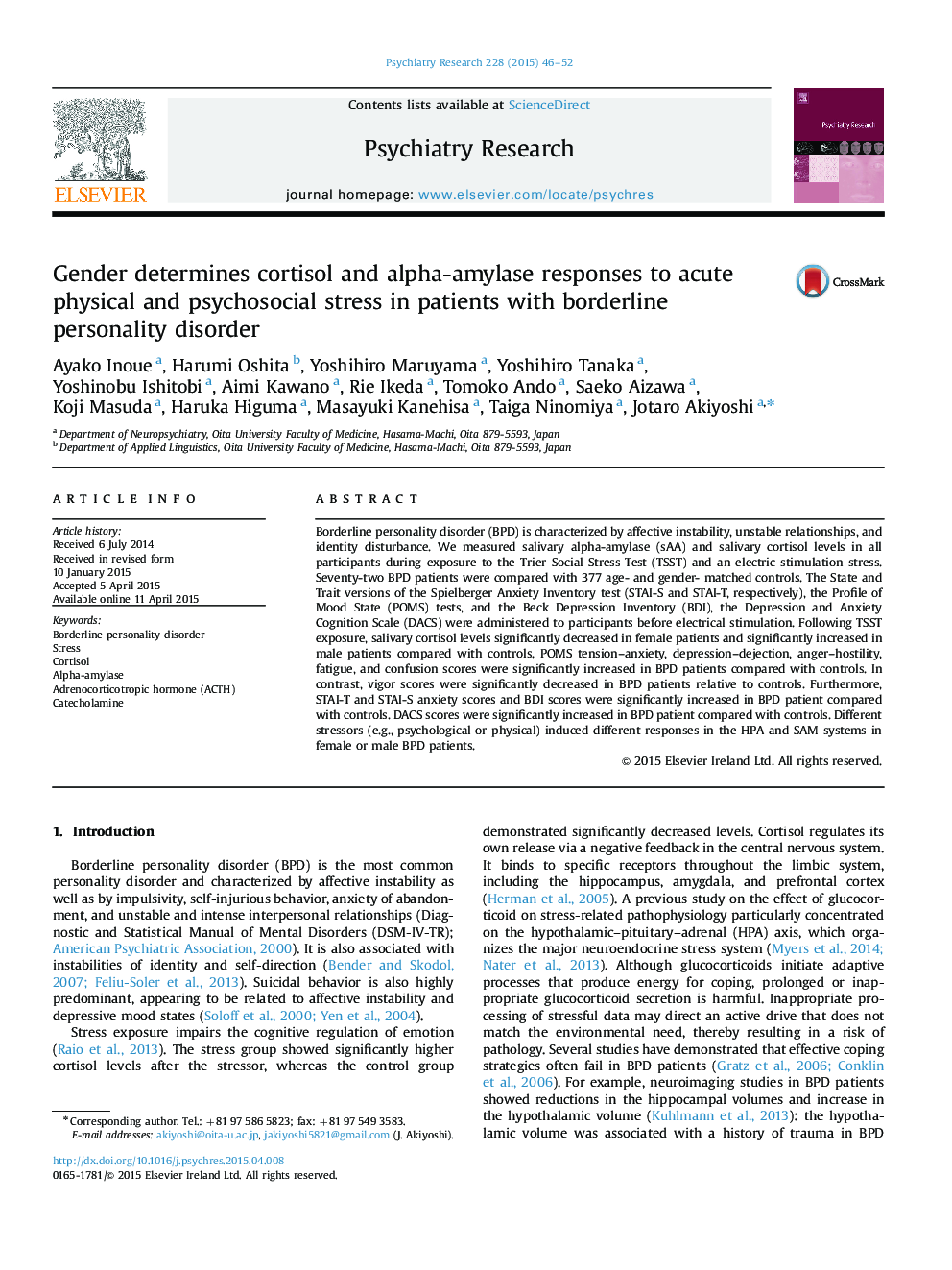| Article ID | Journal | Published Year | Pages | File Type |
|---|---|---|---|---|
| 332902 | Psychiatry Research | 2015 | 7 Pages |
•Salivary cortisol levels decreased in female patients and increased in male patients after TSST.•POMS tension, depression, anger, fatigue, and confusion were increased in BPD.•STAI-T and STAI-S anxiety scores and BDI scores were increased in BPD.•DACS scores were significantly increased in BPD patient compared with controls.
Borderline personality disorder (BPD) is characterized by affective instability, unstable relationships, and identity disturbance. We measured salivary alpha-amylase (sAA) and salivary cortisol levels in all participants during exposure to the Trier Social Stress Test (TSST) and an electric stimulation stress. Seventy-two BPD patients were compared with 377 age- and gender- matched controls. The State and Trait versions of the Spielberger Anxiety Inventory test (STAI-S and STAI-T, respectively), the Profile of Mood State (POMS) tests, and the Beck Depression Inventory (BDI), the Depression and Anxiety Cognition Scale (DACS) were administered to participants before electrical stimulation. Following TSST exposure, salivary cortisol levels significantly decreased in female patients and significantly increased in male patients compared with controls. POMS tension–anxiety, depression–dejection, anger–hostility, fatigue, and confusion scores were significantly increased in BPD patients compared with controls. In contrast, vigor scores were significantly decreased in BPD patients relative to controls. Furthermore, STAI-T and STAI-S anxiety scores and BDI scores were significantly increased in BPD patient compared with controls. DACS scores were significantly increased in BPD patient compared with controls. Different stressors (e.g., psychological or physical) induced different responses in the HPA and SAM systems in female or male BPD patients.
